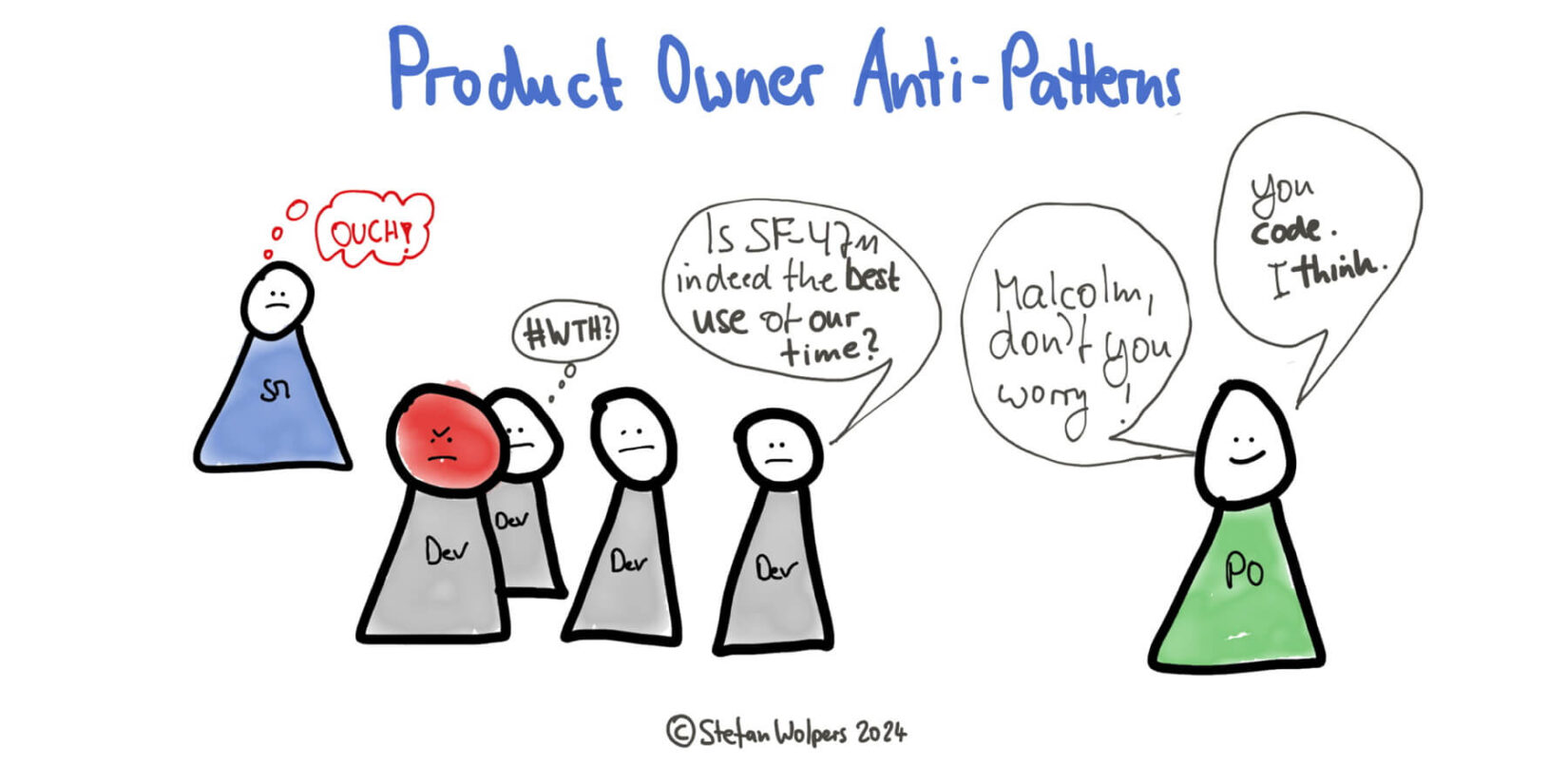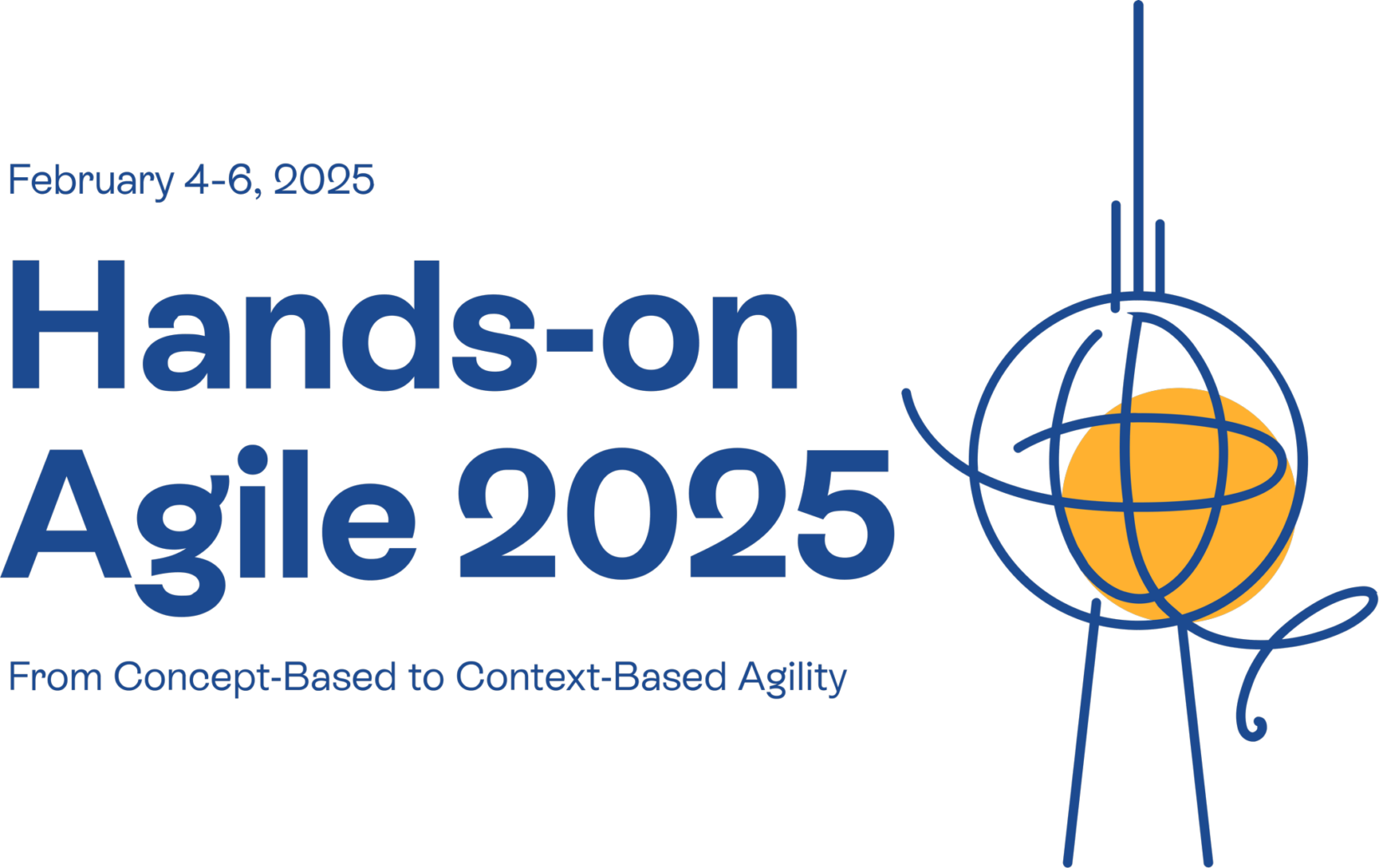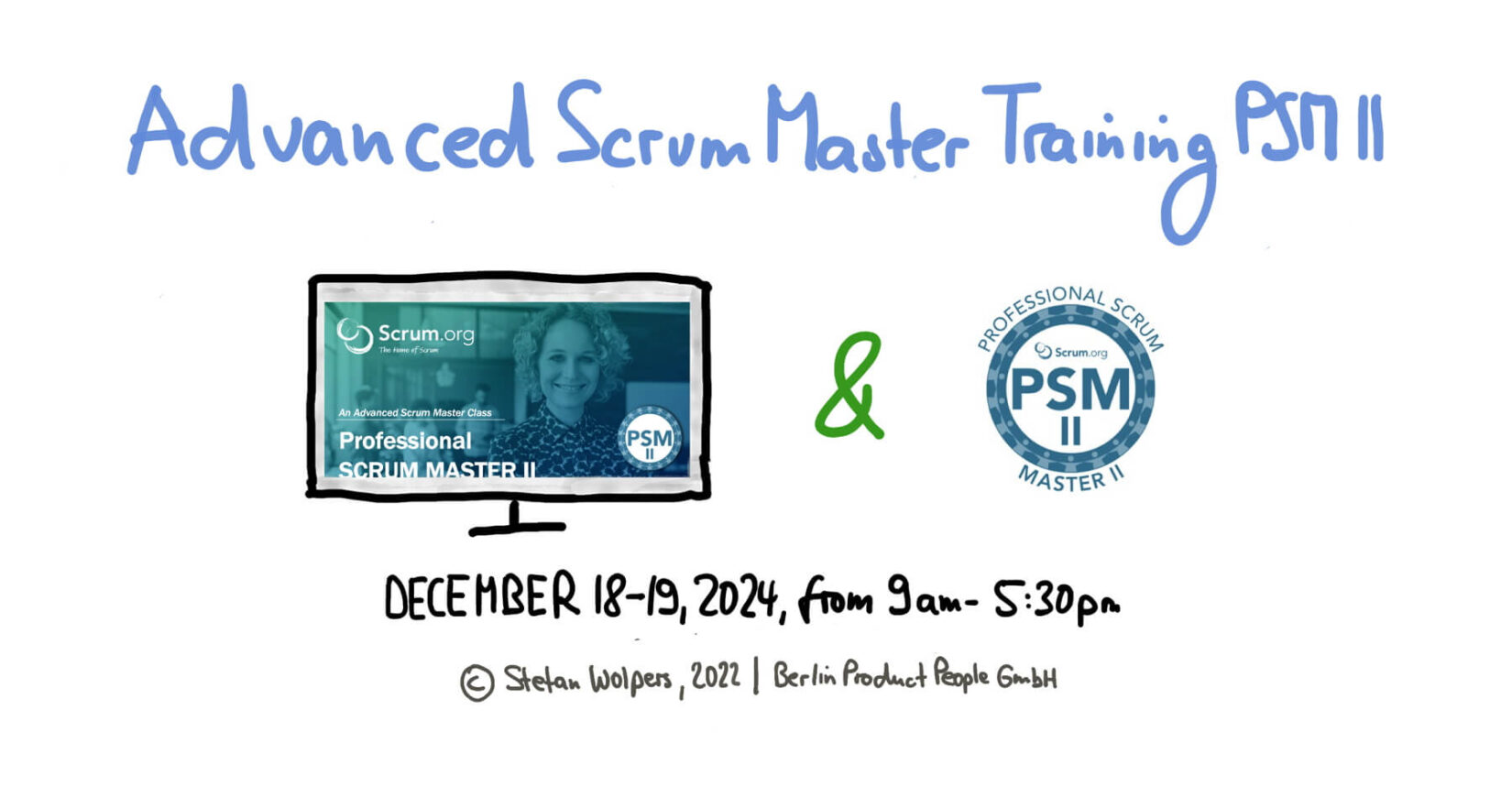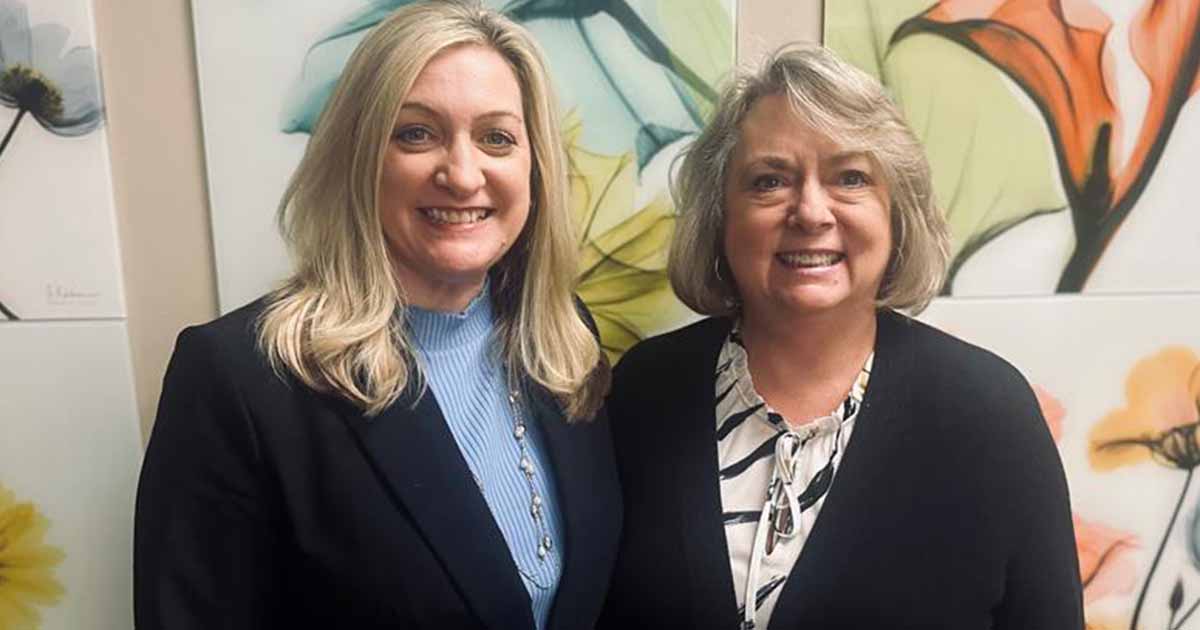TL; DR: Messy Product Management — Food for Agile Thought #467
Welcome to the 467th edition of the Food for Agile Thought newsletter, shared with 42,944 peers. This week, John Cutler explores the adaptive nature of messy product management, emphasizing real-world learning over fixed roles, while Scott Ambler critiques Agile’s “gold rush,” urging a move away from certifications and frameworks toward genuine improvement. Allan Kelly reflects on Art Kleiner’s Age of Heretics, highlighting Agile’s enduring influence despite early transformation failures. Research from Aaron De Smet, Gemma D’Auria, et al. underscores the value of trust and collaboration over “superstar” individuals for team success, and Andy Cleff shares Bob Anderson’s insights on advancing leadership beyond reactive mindsets as essential for true Agile transformation.
Next, Joe Procopio cautions against AI-driven standardization, arguing that real product managers are needed to revive customer-centered innovation, and Noa Ganot offers a three-step approach for maintaining strategic alignment in bottom-up planning, ensuring initiatives align with larger goals. In a podcast, Jason Knight and Jas Shah challenge the “CEO of the product” myth, describing product management as unglamorous and marked by coordination challenges and limited authority. Also, Thijs Morlion and Bart Schroyen introduce a seven-layer model to bridge silos, promoting a collaborative, purpose-driven approach to product development.
Lastly, Jonatan Kruszewski debunks the myth of “zero tech debt,” advocating for manageable debt to enhance delivery and business alignment. Douglas Squirrel and Jeffrey Fredrick delve into Toyota Kata, illustrating how Improvement and Coaching Kata elevate team quality and delivery. Paul Grew introduces a Monte Carlo tool to refine Scrum forecasting, though he emphasizes that data quality and judgment are key. Moreover, Deirdre Cerminaro unpacks systems thinking, presenting mindsets for reframing complex problems. Finally, Dan Shipper suggests that product creation thrives on dynamic, sequence-based thinking over fixed needs, fostering genuine customer engagement through experimentation.

🎓 January 27, 2025: The Advanced Product Backlog Management Course for Just $99!
👉 Please note:
- The course includes membership in my former professional students’ brand-new Hands-on Agile community.
- The course will only be available for sign-up until February 3, 2025!
<!–
This week, the most popular discussion on LinkedIn was: Scrum Masters, are you working too much?
–>
Did you miss the previous Food for Agile Thought issue 466?
🗞 Shall I notify you about articles like this one? Awesome! You can sign up here for the ‘Food for Agile Thought’ newsletter and join 42,000-plus subscribers.
🎓 Join Stefan in one of his upcoming Professional Scrum training classes!
🏆 The Tip of the Week: Messy Product Management
John Cutler: Keep Product Management Messy
John Cutler argues that product management’s complexity and inconsistency are expected, not flaws, given its contextual nature. Instead of seeking rigid definitions, he advocates for adaptable, real-world learning approaches.
Source: Keep Product Management Messy
Author: John Cutler
🍋 Lemon of the Week
(via Medium): The Types of Meetings that Actually Matter for Software Engineers
The author argues that traditional Scrum ceremonies are mere process fillers, favoring meetings that let engineers “focus on substance.” Ironically, he misses the fact that Scrum’s purpose is precisely to deliver a meaningful impact through structure.
<!–
–>
➿ Agile & Leadership
Scott Ambler: The Agile Community Shat The Bed
Scott Ambler argues that the Agile gold rush has ended due to the community’s overemphasis on certifications, frameworks, and fads, which compromised genuine improvement. He believes Agile’s future lies beyond rigid doctrines.
Source: The Agile Community Shat The Bed
Author: Scott Ambler
Allan Kelly: The first agile transformation failure
Allan Kelly reviews Art Kleiner’s Age of Heretics, tracing Agile’s origins through failed transformation experiments like PacBell’s 1986 initiative. Despite setbacks, he argues that Agile’s core ideas endure and continue to shape modern work.
Source: The first agile transformation failure
Author: Allan Kelly
Andy Cleff: Beyond Frameworks: Leadership Evolution and Agile Transformations
Andy Cleff discusses leadership’s role in agile transformations, sharing insights from Bob Anderson on evolving leadership beyond reactive mindsets. He emphasizes that true transformation requires developing leaders’ consciousness, not just implementing frameworks.
(via McKinsey & Company): Go, teams: When teams get healthier, the whole organization benefits
Aaron De Smet, Gemma D, et al. argue that effective teams rely on trust, communication, and context, not “superstar” individuals or chemistry. Their research reveals the structural and behavioral drivers critical for sustainable performance across various team types.
🖥 🇬🇧 Advanced Professional Scrum Master Training w/ PSM II Certificate — December 18-19, 2024
Discover Scrum’s four success principles in this official Scrum.org Advanced Scrum Master training class including the industry-recognized PSM II certification. The PSM II training class is designed as a live virtual class and will be offered in English.
Enjoy the benefits of a live virtual immersive class with like-minded agile peers from 09:00 – 17:30 CEST.
Learn more: 🖥 🇬🇧 Advanced Professional Scrum Master Training w/ PSM II Certificate — December 18-19, 2024.
Customer Voice: “Dear Stefan, Thanks a lot for two intense and mindblowing days. Your way of teaching suites me perfectly. I must admit that all the positive feedback you have gotten is spot on! I would any time a day recommand your class to a Scrum Master who wants to add a whole new level to his/her scrum game. To all of you reading this. You have to experience Stefans class to understand how good it is.” (Source.)
<!–
👉 From time to time, we can offer last-minute seats for training classes at cost to individuals who do not have access to a corporate training budget. If you would like to be notified about these opportunities, please register here.
–>
🎯 Product
Joe Procopio (via Inc.): The Untimely Death of Product Management
Joe Procopio warns that AI-driven standardization risks sidelining product management, which stifles innovation. He argues the field needs “real product people” to break tech’s current rut and revive authentic customer-centric value creation.
Source: Inc.: The Untimely Death of Product Management
Author: Joe Procopio
Jason Knight and Jas Shah: 🎙 Product Management isn’t as Glamorous as People Think
In a podcast interview, Jason Knight shares Jas Shah’s view that product management’s “CEO of the product” image is misleading. In reality, it’s often unglamorous, involving challenging coordination, competing interests, and limited authority.
Source: 🎙 Product Management isn’t as Glamorous as People Think
Authors: Jason Knight and Jas Shah
Noa Ganot (via Medium): Don’t Forget the ‘Up’ in Bottom-up Planning
Noa Ganot emphasizes the importance of maintaining strategic alignment in bottom-up planning, offering a three-step approach to ensure product initiatives connect to bigger objectives even without a top-down strategy.
Source: Medium: Don’t Forget the ‘Up’ in Bottom-up Planning
Author: Noa Ganot
Thijs Morlion and Bart Schroyen: From Silos to Synergy: A New Model for Collaborative Product Development
Thijs Morlion and Bart Schroyen present a new seven-layer product development model that unites purpose, people, process, and product. Their holistic approach aims to break down silos, fostering synergy across teams for better user experiences.
📯 Product Owner Anti-Patterns — 33 Ways to Improve as a PO
No other role in Scrum can contribute to mediocre outcomes like the Product Owner—garbage in, garbage out—and it does not matter whether that’s due to incompetence, neglect, disinterest, or failure to collaborate. Moreover, no Product Owner is the “Mini-CEO” of the product, entitled to make lone decisions. Scrum is a team sport; there are no loners in a successful Scrum Team where collaboration and alignment are prerequisites for success.
A Product Owner prone to making lone decisions is in danger of loving their solution over the customers’ problems. Consequently, collaborating and aligning with their teammates on the Product Goal and the Product Backlog is a proven risk-mitigation strategy for Product Owners. This is a testament to Scrum’s built-in checks and balances, particularly now that the product operating model receives more attention.

Learn more: Product Owner Anti-Patterns — 33 Ways to Improve as a PO.
📅 Hands-on Agile 2025 Is Here — Join 400-plus Peers: From Concept-Based to Context-Based Agility
I am thrilled to announce that Hands-on Agile 2025 is officially on the horizon and will be free to attend from February 4-6, 2025. This time, we will focus on how Agile needs to evolve from concept-based agility to context-based agility.
But before we discuss what that means, let’s take a step back and consider why Hands-on Agile 2025 is going to be a can’t-miss event for everyone in the agile community.
For those unfamiliar, Hands-on Agile isn’t just another conference. It’s an event built around the Barcamp model, meaning it’s a self-organized, community-driven gathering with one goal: Sharing knowledge and experiences.
From February 4 to 6, 2025, we will spend three energizing days engaging in sessions, practicing agile games, sharing war stories, and learning directly from each other. Hands-on Agile is all about creating a space for practitioners, coaches, leaders, and newcomers to connect in a truly hands-on way.

Save Your Seat Now!
There are no tickets; Hands-on Agile 2025 is free.
However, you will need to register nevertheless. Otherwise, you would not receive, for example, the invitation to the HoA2025 community or have access to individual session access credentials:
Please note:
- For technical reasons, your sign-up confirmation will be sent from stefan [at] age-of-product.com.
- Your registration to Hands-on Agile 2025 will also subscribe you to Stefan’s Food for Agile newsletter, one of the largest independent newsletters on agile practices worldwide.
- Your invitation to join the Hands-on Agile 2025 community will be limited to February 28, 2025.
🛠 Concepts, Tools & Measuring
(via Medium): Why Zero Tech Debt is a Myth (and Maybe a Red Flag)
Jonatan Kruszewski argues that zero tech debt is a myth—and even a red flag. Managed tech debt accelerates feature delivery and supports business needs while obsessing over “debt-free” code often hinders progress.
Douglas Squirrel and Jeffrey Fredrick: 🎙 Troubleshooting Agile: Toyota Kata A-Z
Douglas Squirrel and Jeffrey Fredrick explore Toyota Kata A-Z, showing how teams can boost results by adopting Toyota’s Improvement and Coaching Kata to instill quality, delivery, and “scientific thinking.”
Source: 🎙 Troubleshooting Agile: Toyota Kata A-Z
Authors: Douglas Squirrel and Jeffrey Fredrick
Paul Grew: Monte Carlo Simulation for Scrum Team Sprint Planning and Release Forecasting
Paul Grew introduces a Monte Carlo simulation tool for Scrum teams. The tool aims to improve sprint and release planning by forecasting based on historical data. While insightful for planning conversations, the results depend on data quality and should supplement—rather than replace—team discussions and professional judgment.
Source: Monte Carlo Simulation for Scrum Team Sprint Planning and Release Forecasting
Author: Paul Grew
Deirdre Cerminaro (via IDEO U): The Beginner’s Guide to Systems Thinking: Core Mindsets for Seeing the Big Picture
Deirdre Cerminaro, on the Creative Confidence Podcast, introduces systems thinking fundamentals, highlighting three key mindsets and practical tools for reframing complex challenges and enhancing problem-solving across work and community contexts.
🎶 Encore
Dan Shipper (via Every): How to Figure Out What People Want
Dan Shipper argues that creating products that people actually want requires thinking in sequences, not fixed needs, and provoking context-driven responses. By observing and experimenting, product makers can generate genuine customer interest.
Source: Every: How to Figure Out What People Want
Author: Dan Shipper
📅 Scrum Training & Event Schedule
You can secure your seat for Scrum training classes, workshops, and meetups directly by following the corresponding link in the table below:
See all upcoming classes here.
You can book your seat for the training directly by following the corresponding links to the ticket shop. If the procurement process of your organization requires a different purchasing process, please contact Berlin Product People GmbH directly.
📺 Join 6,000-plus Agile Peers on Youtube
Now available on the Age-of-Product Youtube channel to improve learning, for example, about Messy Product Management:
- Hands-on Agile 62: From Backlog Manager to Product Manager with David Pereira.
- Hands-on Agile 61: Toyota Kata Coaching for Agile Teams & Transformations with Fortune Buchholtz.
- Hands-on Agile 59: Tackling Fake Agility with Johanna Rothman.
- Hands-on Agile 57: Humble Planning with Maarten Dalmijn.
- Hands-on Agile 53: An Agile Coaches Guide to Storytelling with Bob Galen.
- Hands-on Agile EXTRA: How Elon Musk Would Run YOUR Business with Joe Justice.
✋ Do Not Miss Out and Learn About Messy Product Management — Join the 20,000-plus Strong ‘Hands-on Agile’ Slack Community
I invite you to join the “Hands-on Agile” Slack Community and enjoy the benefits of a fast-growing, vibrant community of agile practitioners from around the world.
If you like to join all you have to do now is provide your credentials via this Google form, and I will sign you up. By the way, it’s free.
Help your team to learn about Bringing Problems to Leaders by pointing them to the free Scrum Anti-Patterns Guide:
🗞️ Last Week’s Food for Agile Thought Edition
The post Food for Agile Thought #467: Messy Product Management, Agile Goldrush, PM’s Untimely Death, Toyota Kata A-Z appeared first on Age-of-Product.com.











